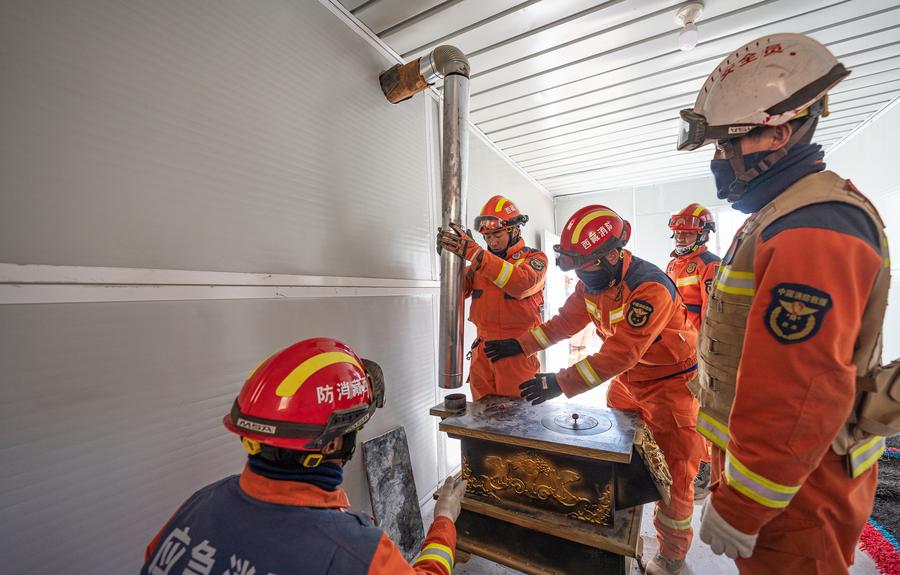
Firefighters install a heating facility for quake-affected residents inside a makeshift house in Yejing village of Dingri county in Shigatse, Southwest China's Xizang autonomous region, Jan 13, 2025. [Photo/Xinhua]
In Nyanrong, a county with an average altitude of over 4,700 meters in Southwest China's Xizang autonomous region, clean energy projects are transforming winter heating for residents.
The temperature in Nyanrong can still fall below zero toward the end of March, but the home of villager Sangtso was warm.
"No more collecting cow dung for months ahead of winter. Our village's solar-powered heating keeps us cozy," Sangtso said.
Cao Lin, a local official, said, "The photovoltaic heating system is operating well, generating over 2,000 kilowatt-hours of electricity daily." He added that Xizang boasts abundant solar energy resources, ideal for solar heating.
Meanwhile, in Dingri county's Yejing village, quake-affected families like Sangye Chosphel's are burning smoke-free biomass pellets made from processed livestock dung. "This fuel burns cleaner than regular dung and lasts much longer. One bag of the fuel keeps us warm for days," said the 58-year-old.
On Jan 7, an earthquake struck the county. Many houses collapsed or were severely damaged. Within days, temporary housing was erected while electricity and water supplies were fully restored, with biomass pellets neatly stacked by the stoves.
These pellets, donated by Shenzhen's One Foundation, can reduce emissions and produce almost no sulfur dioxide.
The biomass fuel utilizes solid fuel combustion technology, converting agricultural and livestock waste into clean energy. The foundation has distributed 465 metric tons of the pellets, ensuring locals stay warm through the long winter.
Backed by 3.78 billion yuan ($522 million) in social investment, Xizang's clean heating pilot projects expanded to seven counties and districts last year.
As of May, an additional 6.2 square kilometers of heating coverage will have been completed, benefiting over 200,000 residents, according to the regional department of housing and urban-rural development.
The region has also introduced policies to achieve clean heating in areas above 5,000 meters in altitude. Last year, 1,553 households across 25 high-altitude villages transitioned from dung-burning to clean heating.
"The heat pumps work fast and cut costs," said Gungdrak, a resident of Pumaqangtang, China's highest township, in Nakarze county, Xizang. "My knees don't hurt like they used to."
Xinhua
